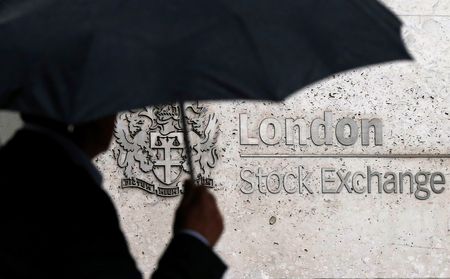

By Herbert Lash and Elizabeth Howcroft
NEW YORK/LONDON (Reuters) -Stocks in Europe and on Wall Street rebounded on Tuesday while oil prices fell after Russia indicated it was withdrawing some troops from exercises near Ukraine and President Vladimir Putin said he saw room for further discussion with the West.
Gold and bond prices also slid as safe-haven assets lost some of their appeal with tensions easing a bit over Ukraine, but NATO said it had yet to see any evidence of de-escalation.
The dollar index pared some losses as Putin and German Chancellor Olaf Scholz spoke, a sign tensions over Ukraine haven’t been resolved. But the index later moved lower, down 0.335%, as its safe-haven appeal also lost some lustre. The euro up 0.52% to $1.1364.
“In the back of everybody’s minds this is not going away. Putin might be saying one thing and just waiting for the right time to make a move,” said Tom di Galoma, managing director at Seaport Global Holdings.
Major U.S. and European stock indices rose, with megacap growth and banks leading the rally on Wall Street.
The pan-European STOXX 600 index rose 1.41%, while MSCI’s gauge of stocks across the globe gained 1.26%.
On Wall Street, the Dow Jones Industrial Average rose 1.31%, the S&P 500 gained 1.50% and the Nasdaq Composite added 2.07%.
U.S. producer prices increased by the most in eight months in January, the Labor Department said, another sign that high inflation could persist through much of this year.
Longer-dated U.S. Treasury and euro zone bond yields rose, as investors took comfort from the potential easing of tensions over Ukraine and ignored the PPI data.
The benchmark 10-year Treasury note rose 3 basis points to 2.026%. Germany’s 10-year yield touched its highest since 2018 on the day’s easing of Russia-Ukraine tensions.
It remains to be seen whether the Federal Reserve can get inflation under control by raising interest rates alone, di Galoma said.
“Every element of that number was higher than estimates.”
Investors also focused on the trajectories for major central banks to tighten monetary policy. Fed officials are split over how aggressively to raise rates.
Markets are pricing in a 65.5% chance of a 50-basis-point hike and a 34.5% chance of a 25-bps hike at the U.S. central bank’s March meeting.
“Energy prices are still trending upwards and that makes it more difficult for central banks to move less hawkish, so we still think risk assets are under pressure going forward and yields should be going higher,” said Peter McCallum, rates strategist at Mizuho.
Oil fell from seven-year highs.
U.S. crude recently fell 4.2% to $91.45 per barrel and Brent was at $92.82, down 3.79% on the day.
Precious metals also fell, with gold slipping from a multi-month high and palladium shedding more than 5%.
Spot gold dropped 1.0% to $1,850.93 an ounce.
(Reporting by Herbert Lash, additional reporting by Elizabeth Howcroft, Editing by William Maclean and Bernadette Baum)

